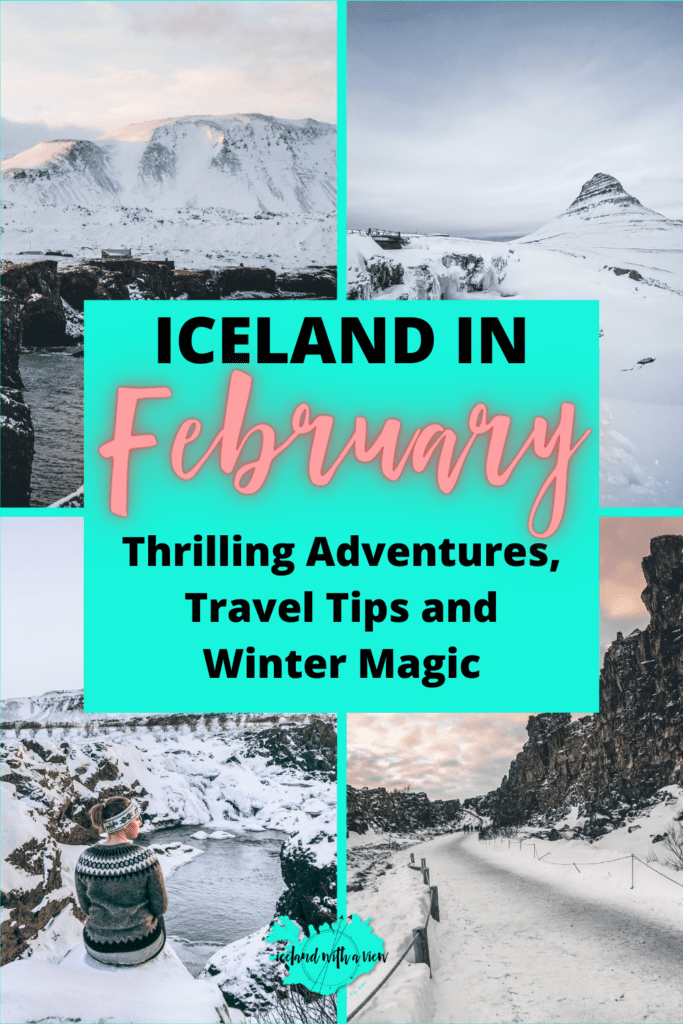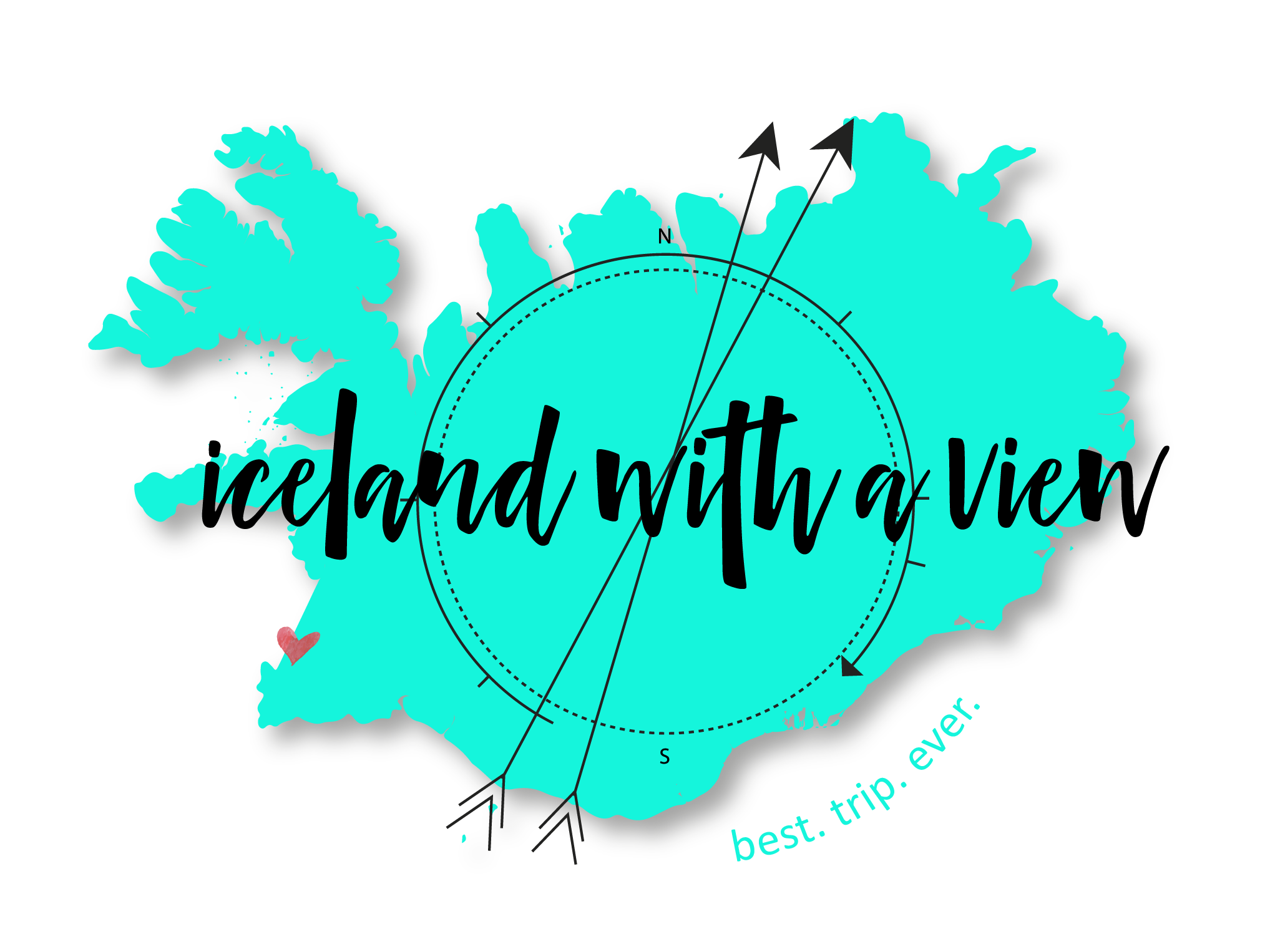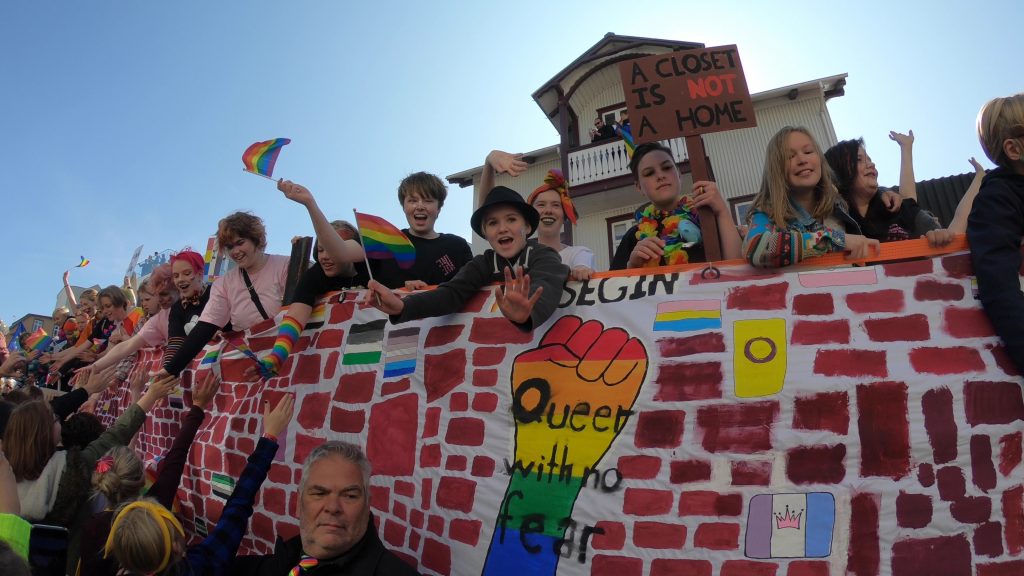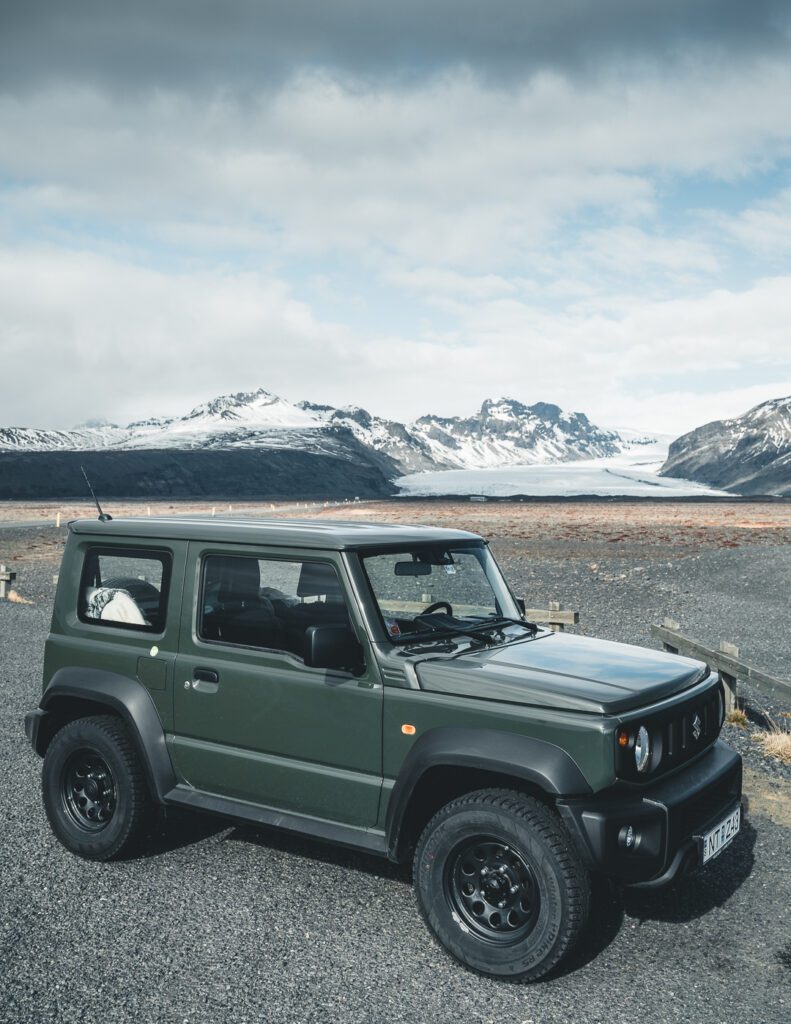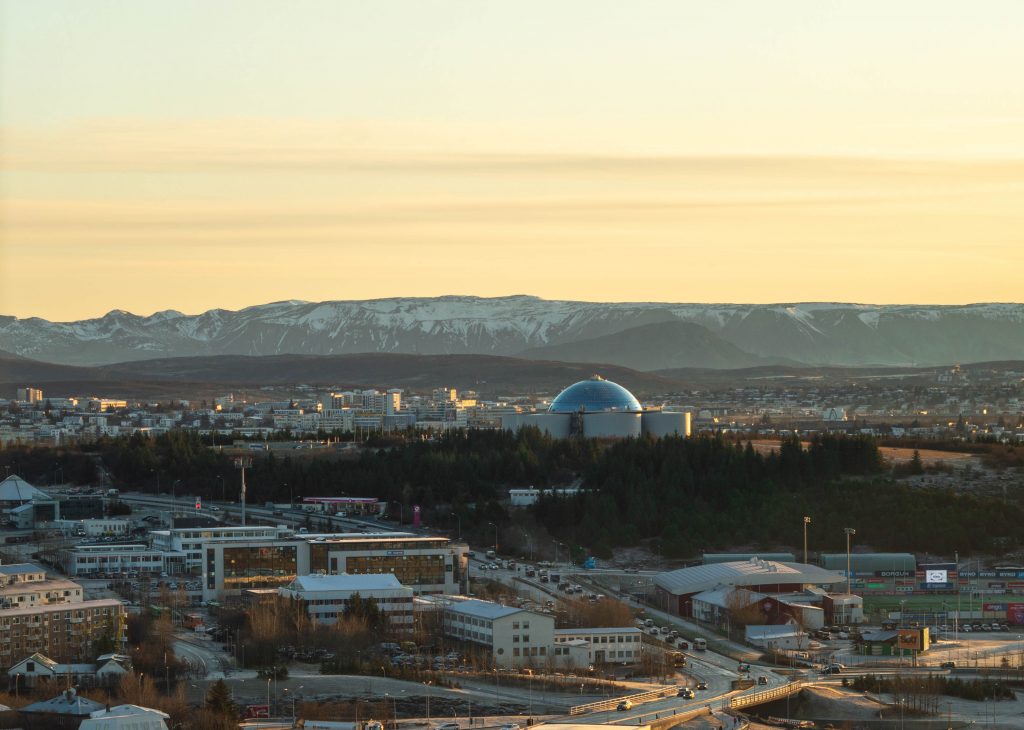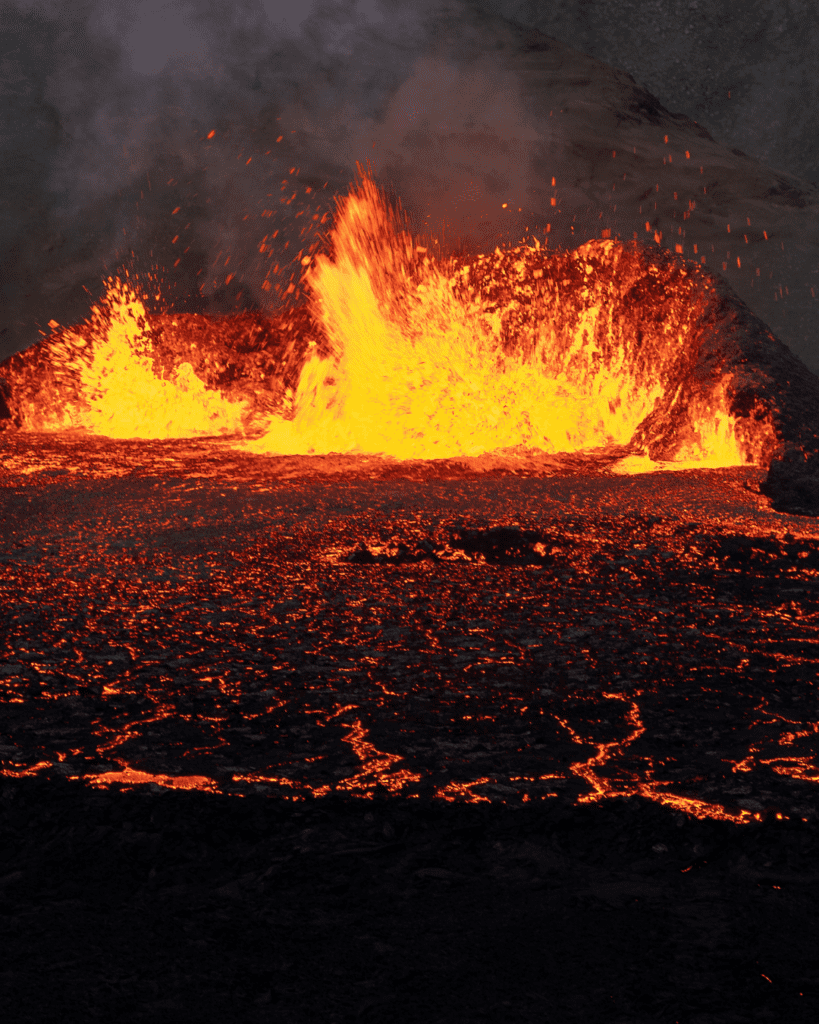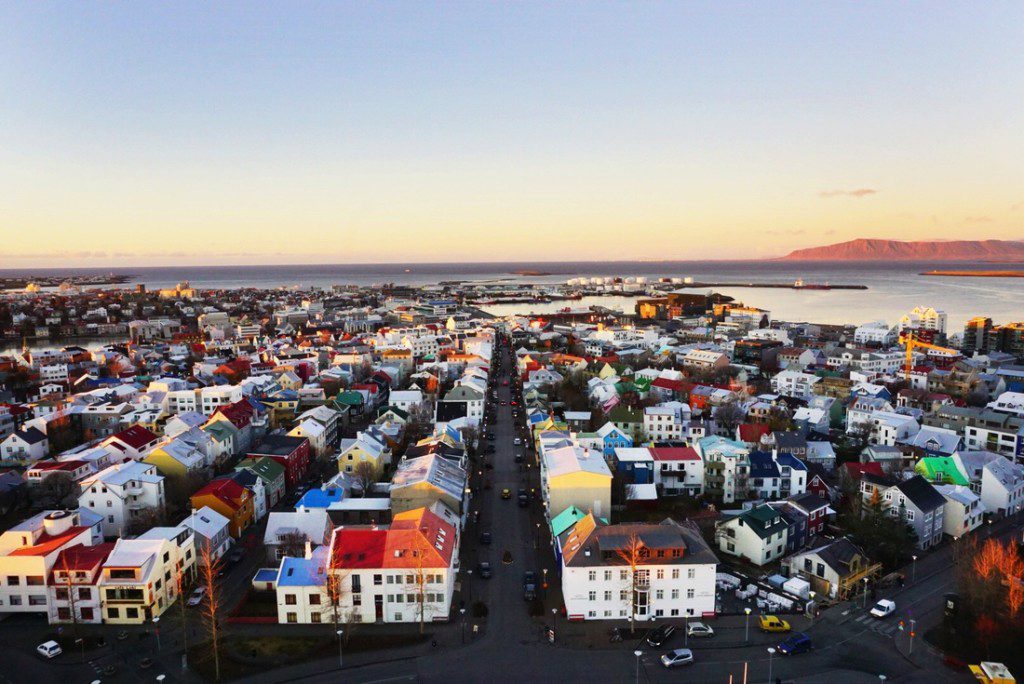If you’ve ever watched Game of Thrones and dreamed of experiencing the beauty of the north – without the threat of White Walkers, then an epic adventure to Iceland in February may be just what the doctor ordered!
While most travelers flock to this beautiful country in the warmer months, February in Iceland offers its own unique and magical experiences.
If you want all the details on what to pack, sightseeing availability, festivals, and more, keep reading.
Jon Snow may know nothing, but you’ll know everything you need in order to plan an epic trip to Iceland in February! 😉
Table of Contents
- Is February a Good Time to Visit Iceland?
- Daylight Hours in Iceland in February
- Iceland in February: Northern Lights
- Iceland’s Weather in February
- What To Wear in Iceland in February
- Sightseeing Availability
- Driving in Iceland in February
- February Festivals + Events
- Things To Do In Iceland In February
Is February a Good Time to Visit Iceland?
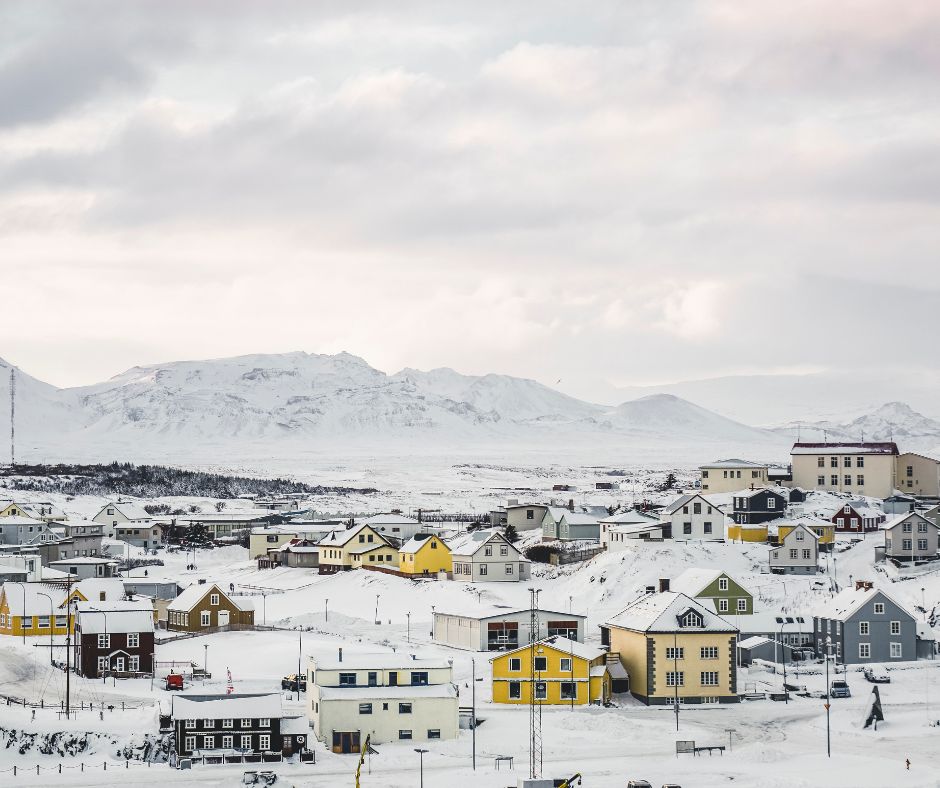
Many people may question whether it’s worth visiting in the winter months. But what I love about Iceland, is that every month has its own unique charm. February is no exception. Let’s see why…
Off-peak season: We’re still in low season and if you’re visiting in February, you’ll reap the benefits of it. These include cheaper flights and accommodation, and fewer people – even at the more “touristy” attractions. It’s always fun to get front-row seats!
Northern Lights: The nights are still pretty long, which makes February a good month to catch this natural spectacle.
More daylight hours: The good news is that, unlike December and January, daylight hours are starting to increase this month. You can experience the best of both worlds. Enjoy a winter wonderland and have more daylight hours to explore. WIN-WIN!
Winter Activities: There are so many activities to do and sights to explore in February. In fact, some tours are only available in the winter months.
Daylight Hours in Iceland in February
Before you plan your itinerary, it’s crucial to know how many daylight hours you have during the month you’re visiting.
This allows you to make the most of your sightseeing opportunities so that you don’t miss a thing.
The daylight hours in Iceland in February start to return to a more normal level during this month, especially as you get closer to March.
The month starts with about 7 hours of daylight and by the end of February, it’s up to 10 hours.
More daylight hours means more time to explore outdoors, but with the added bonus that you’re still able to experience the beautiful golden hours at sunrise and sunset.
So, don’t forget your camera!
Iceland in February: Northern Lights
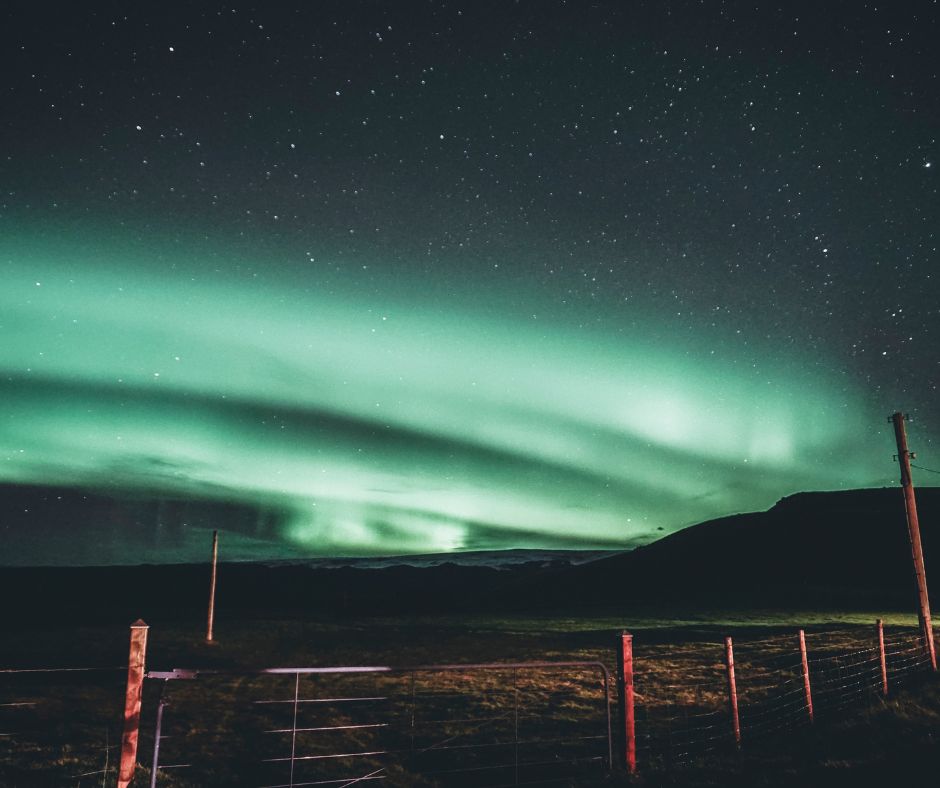
Let me just say, if you’re visiting Iceland you need to make seeing the aurora a priority.
It’s one of my absolute favorite experiences and I’m happy to announce that the Northern Lights are still here in Iceland in February!
To see them, you need dark and mostly clear skies. While February can definitely throw you the odd storm or two, making aurora viewing tricky, you still have a good chance!
There are various Northern Lights Tours on offer if you want it planned out for you.
However, if you want to hunt them on your own, then check out the Aurora forecast for the best conditions to see them.
➡️ READ MORE: How To See The Northern Lights In Iceland: Best Viewing Spots, When To Go And MORE
Iceland’s Weather in February
The weather in Iceland in February is still cold, as you’d imagine.
It’s also a notoriously stormy month, so brace yourself for wild winds and snow storms that can catch you off guard.
If you’re curious about what to expect, check out my Winter Weather in Iceland post for more information.
Temperatures In Iceland In February
How cold is Iceland in February? Well, the average temperatures in Iceland in February range anywhere from -2 to 4° C (28-39°F). But remember, with the wind, it can oftentimes feel much colder.
What To Wear in Iceland in February
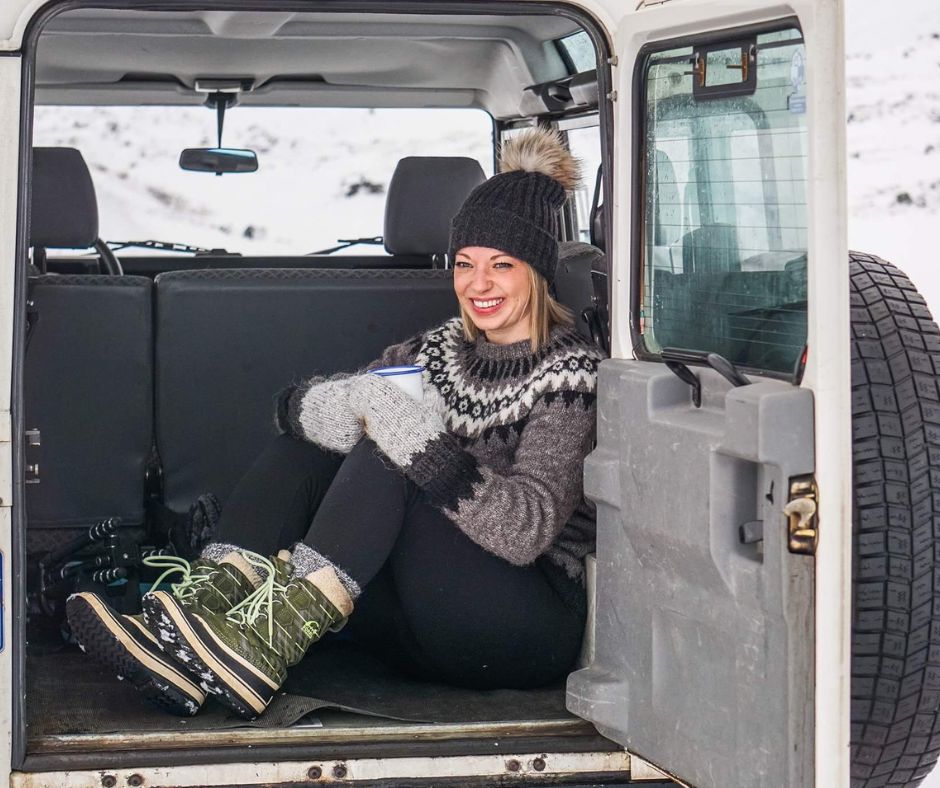
You’ll want to pack with wind chill in mind and be ready for the unexpected.
The weather in Iceland can change in the blink of an eye and the last thing you want is to worry about not having the correct gear and clothing to fully experience the spectacular sights.
My advice? Dress in thermal layers that are not only water but also windproof so that you’re comfortable while you’re out exploring.
Here are some ideas on what you need to pack to rock the look I like to call Viking chic! 😉
Outerwear: Remember those strong winds? Your jacket needs to be wind and waterproof.
Let’s not forget the essentials – gloves, a hat and a scarf.
Layers: Thermal layers are your best friend here. From leggings to woolen socks and layered long-sleeved tops that you can remove if you need to.
If you don’t already have a good sweater that can withstand this climate, consider investing in a traditional Icelandic sweater or Lopapeysa.
They’ve got beautiful traditional designs and are SO warm! They’re naturally anti-bacterial and water-resistant. Plus, they make for an incredibly special souvenir.
Read more about it here: ➡️ Icelandic Lopapeysa: Your Guide to Buying Authentic Icelandic Wool Sweaters
Footwear: I’m guessing that if you’re planning a trip to Iceland, then you’re likely here for the stunning natural beauty. Hiking is definitely on the cards, and you’ll need to be prepared with hiking boots that are waterproof and comfortable. These ones are a great option!
Pro Tip: If it’s winter in Iceland, you can be sure that everything will be slippery and covered in ice.
You cannot leave home without crampons or Yaktrax in your suitcase.
They’re an item that goes around the bottom of your boots and provides extra grip and protection on icy surfaces.
You’ll need them whether you’re walking to the tourist attractions in Reykjavík or hiking around the waterfalls.
I promise it’ll be the best investment you’ll make for your trip.
Other: Think about what activities you’ll be doing and be sure to bring any special gear needed. Remember that a lot of the hot springs are accessible in winter, so don’t forget your swimsuit and quick dry towel.
With so many outdoor attractions to enjoy, don’t let your clothes hold you back from making the most of your trip.
If you’re unsure what to take to Iceland in February, be sure to check out my post all about Iceland winter packing.
And I’ve got a FREE Iceland Packing Guide that comes with a downloadable checklist that you can download here:👇
Sightseeing Availability
Thankfully there are a lot of areas that are still accessible. But let’s take a look at what you can expect in February.
Reykjavík, the Golden Circle, and South Iceland: The Golden Circle is the most famous scenic route here, and because of that, the roads are well maintained and cleared of snow. Reykjavík and South Iceland are also easily accessible.
East and North Iceland and Snæfellsnes Peninsula: When it comes to winter travel, there are incredible spots like East and North Iceland and the Snæfellsnes Peninsula that you’ll no doubt want to visit. Even though you can reach these areas in February, please be extremely careful.
The roads may not be as maintained and it can be dangerous if you’re not comfortable driving on these kinds of roads – safety first.
Highlands, Westfjörds, and interior: Areas that are not accessible include the highlands, therefore, Landmannalaugar, þórsmörk, and any of the more interior areas.
The Westfjörds are challenging because a lot of the areas are connected by mountain passes and sometimes the roads are completely closed.
I don’t recommend adding these to your itinerary unless you are very experienced with winter driving and road conditions.
Driving in Iceland in February
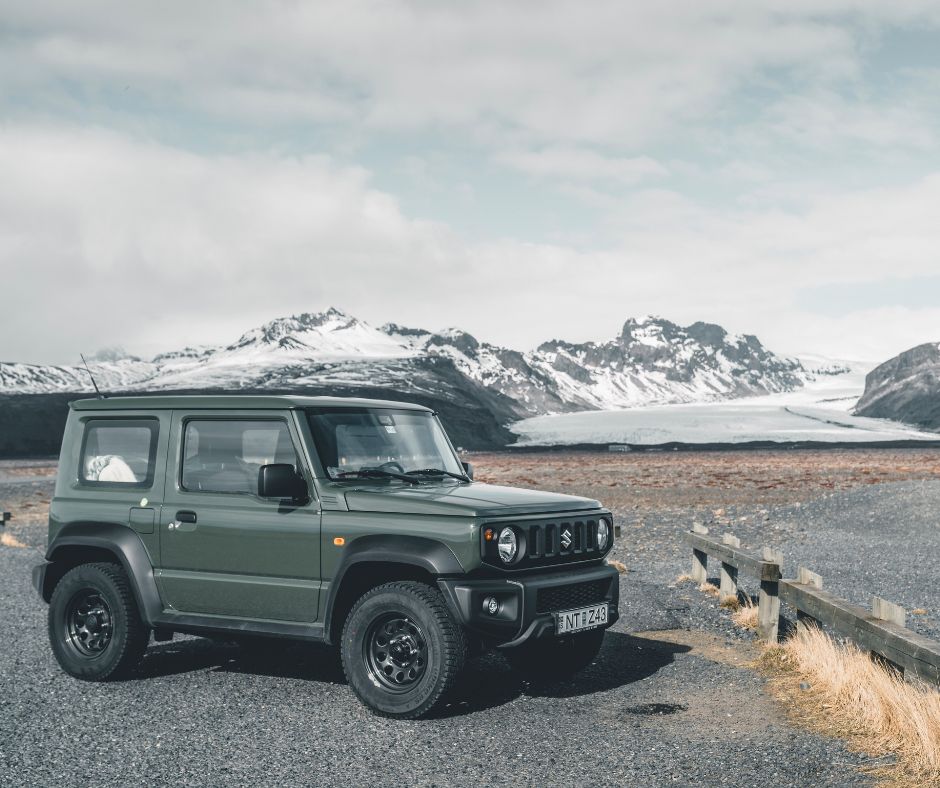
Okay, let’s dive into driving in Iceland in February.
I once tackled the Snæfellsnes Peninsula solo in a two-wheel drive. I’ve driven plenty of Icelandic winter roads before, so I thought, “No big deal, right?”
But, oh boy, was I wrong!
It turned out to be a terrifying experience. The roads were like an ice rink, and the wind had my car slipping and sliding on the thick layer of ice.
It was, hands down, the scariest driving experience of my life!
Winter driving in Iceland requires a Viking spirit and nerves of steel.
Pro tip: Always rent a four-wheel drive in February, and never venture out before checking Road.is. There, you’ll find updates on road conditions and closures, so there’ll be fewer unexpected surprises!
And if you’re up for the challenge, be sure to snag a discount with my all-time favorite car rental company in Iceland.
February Festivals + Events
Despite the winter chill, you’ll find locals and visitors coming together to celebrate the unique events and festivals in February.
Winter Lights Festival: The first thing that happens at the beginning of February is called the Winter Lights Festival.
Because the winter days are long and dark, Reykjavík puts on a big, beautiful festival over multiple days where they have lights all over the city. It’s a celebration of art, history, culture, industry and more.
Different areas around Reykjavík as well as Harpa, the concert house, are lit up. Even Hallgrímskirkja, the largest church in Iceland, has a light show on it.
So, if you’re looking for something fun to do that’s also FREE, check out the Winter Lights Festival website for more information.
February 12th: There’s an Icelandic holiday in February known as Cream Puff Day! I kid you not! If you walk into any workplace, there will be multiple boxes of cream puffs laid out. They have different toppings, fillings, and flavors. Be sure to visit one of the bakeries on that day because you’ll find an incredible selection of cream puffs.
February 13: This is Sprengidagur which translates to “bursting day.” It’s a day dedicated to consuming salted meat and peas.
Traditionally, it aligns with the Christian Lent calendar, marking the last opportunity people have to indulge themselves before fasting begins.
February 14: Öskudagur (ashes day) marks the beginning of Lent and Ash Wednesday. On this day, children dress up and go from house to house, singing songs in exchange for treats.
It’s quite similar to American Halloween, so you’ll see a lot of children walking around wearing costumes.
Interestingly, Icelanders don’t really celebrate Valentine’s Day. While each year I see some Valentine’s Day influence creeping in, it’s not a major event here.
Things To Do In Iceland In February

Many attractions are only available to see in winter, so whether you choose to take a tour or explore on your own. Here are a few things to do in Iceland in February.
Lava caves/tunnels: Explore lava tunnels such as the Lava Tunnel Raufarhólshellir cave. This tunnel is one of the largest in Iceland, and scenes from the movie Noah were shot here.
Waterfalls: With an estimated 10,000 waterfalls in Iceland, you don’t want to leave without experiencing these beauties. Waterfalls such as Seljalandsfoss, Skógafoss, and Goðafoss are still accessible in the winter months.
Snowmobiling: If snowmobiling on a glacier sounds like your cup of tea, then consider doing it on Langjökull, Iceland’s second-largest glacier.
Ice caves: Due to the cold weather, it’s still safe to explore the stunning ice caves. If you want to experience glaciers, waterfalls, and lagoons all in one tour Jökulsárlón Glacial Lagoon and Diamond Beach Tour would be a good option. Psst…You may recognize the lagoon from movies like Batman Begins and James Bond.
Geothermal pools: Don’t let the fact that it’s winter stop you. Most pools and hot springs are open year-round, so if you’ve daydreamed about soaking in a geothermal pool surrounded by snowy landscapes, this is the perfect time.
Horse riding and snorkeling: Who would have thought that horse riding and snorkeling go so well together?! Even though it’s winter, you can snorkel in the Silfra – one of the best snorkeling sites in the world!
The Reykjavík Food Walk: If you’re ready to experience Icelandic culture through your stomach, The Reykjavík Food Walk is a must-do for any self-proclaimed foodie. Rated as the #1 food and drink activity in Iceland, The Reykjavík Food Walk takes you to 6 restaurants that range from well-known to little family-run restaurants that the locals love. Highly recommended!
As you can see, you have a lot of choices for things to do in Iceland in February.
If you’re tired of sifting through endless articles and guides and want to simplify your travel planning, then you’ll want to check out these 👉 Iceland Guidebooks + Maps
With over 500 pinned locations, the digital maps everything from must-see highlights to hidden gems, and even need-to-knows like pharmacies and playgrounds. I’ve added all of the practical details you actually need, like parking fees, minimum ages for tours and so much more.

Embrace your adventurous spirit, pack your layers, and let’s plan your next adventure to Iceland!
Happy Planning,

Pin it for later! 👇🏼
